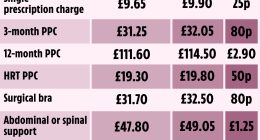
Find out the difference between these two foundational campaigns so you can determine which best fits your needs.
March 11, 2020 5 min read
Opinions expressed by Entrepreneur contributors are their own.
The following excerpt is from Robert W. Bly’s The Content Marketing Handbook. Buy it now from Amazon | Barnes & Noble
When it comes to marketing, there are two types of campaigns you can run: one with just one step or one that includes multiple steps.
One-step content marketing is a limited campaign in which you essentially deliver a piece of meaningful content to your target audience. That’s it.
The classic example of a single-step use of content is writing an op-ed piece or letter to the editor for your local newspaper. You express your opinion in a short article that runs once. There’s no explicit call to action (CTA) mechanism for the reader to respond to. No list to join. And no expectation of receiving further content on the subject. The op-ed is designed to influence and educate all on its own. Of course, readers can write letters to the editor in response to your op-ed.
Multistep content marketing, more commonly used to generate leads or sales, typically starts by using copywriting to drive prospects to a piece of relevant content they can read and download. You can add more steps to the sequence to take your prospect from the top of the sales funnel to the bottom. Your goal is often to capture quality leads for your company, either to sell a product directly off the web or drive prospects to a brick-and-mortar location for purchase.
At each stage, the content can serve two purposes:
- To increase conversions, meaning the percentage of people who go on to the next step in the sales funnel.
- To educate prospects about your product, including features, benefits, and applications. This answers the prospects’ questions, so by the time they get to the bottom of the funnel, they know most or all of what they need to make a purchase decision.
Here’s a critical piece of advice: Never do a multistep lead-generating promotion—postcard, ad, banner ad, email, or direct-mail package—without a free content offer.
The content can be an informative booklet, white paper, or special report addressing some aspect of the problem your product or service helps the reader solve. You offer a free copy of this information to prospects who inquire about your product or service.
You’ll greatly increase responses to your direct mail and other promotions with the offer of a strong bait piece, such as “Call or write us today for a copy of our FREE booklet, 7 Ways to Reduce Energy Costs.”
Conversely, not having a bait piece will significantly lower the response rate to your lead-generating direct response promotions, whether the campaign is B2B or B2C.
To avoid only attracting people who want the free booklet, have both a “hard” and “soft” offer in every lead generation promotion. The soft offer is the lead magnet—for example, “Click on this link to download a copy of our free white paper on internet security.” The hard offer is “Call us now to arrange an appointment so we can discuss your internet security needs in detail.” Prospects with an immediate need will take you up on the hard offer, whereas those who don’t need your help right now but might be interested in the future are more likely to respond to the soft offer.
Years ago, I used direct mail to generate leads for business writing seminars I marketed to corporations. The main offer was “Mail this card for more information on my seminar, Effective Technical Writing.”
Then I got smart and added a P.S. that said, “Be sure to ask for our FREE tip sheet, ‘10 Ways to Improve Your Technical Writing’ ”—which was a reprint of an article I’d published in a trade magazine. As soon as I included this soft offer, my response rates doubled, and so did my sales.
Three Factors That Can Increase Conversion in Multistep Content Campaigns
At the top of the sales funnel, the first conversion is often a free content offer, with ebooks and white papers being popular lead magnets. The following are three things you can do to increase your lead magnet’s desirability and generate more downloads:
1. Titles. The title should capture the prospect’s attention, typically by arousing curiosity, making a big promise (such as solving a pressing problem), or promising to reveal useful information or important news.
2. Perceived value. Here’s a simple trick for establishing high perceived value: Even though you’re giving the content away, put a price on the cover. Very few content marketers know this simple technique, but if there’s no price on the cover, the recipient doesn’t think the lead magnet is as valuable.
3. Table of contents. Lead magnets of three to four pages or longer should have a table of contents (TOC). The chapter titles in the TOC should be written like bullets in sales copy to increase interest in the contents.
This article is from Entrepreneur.com









